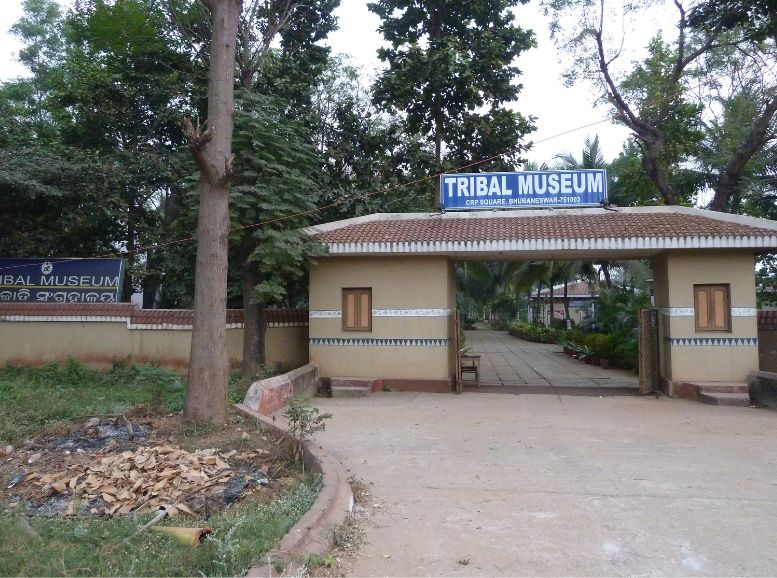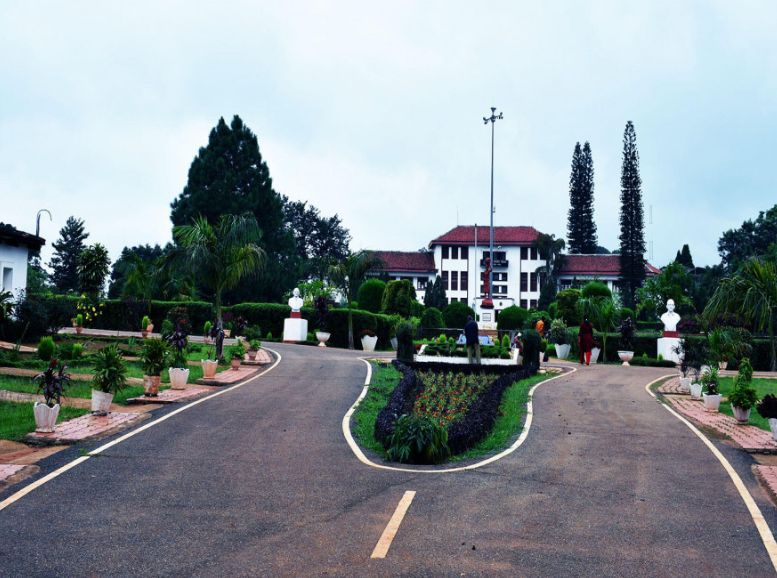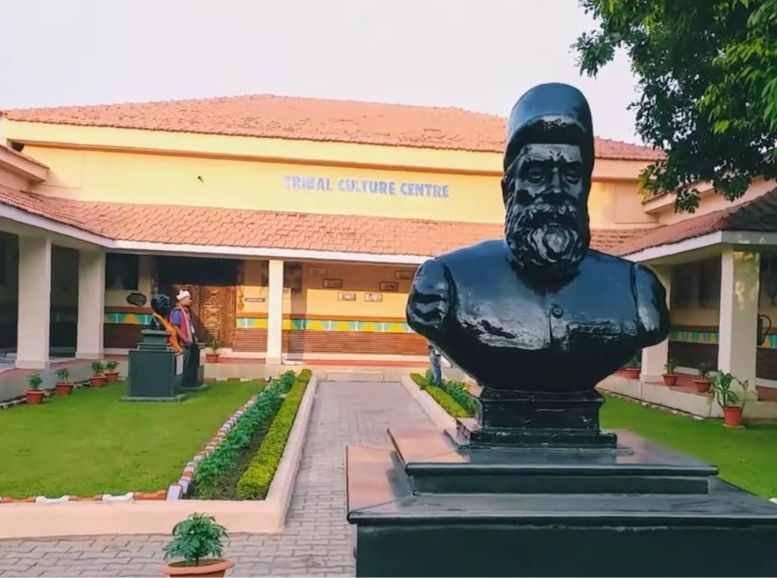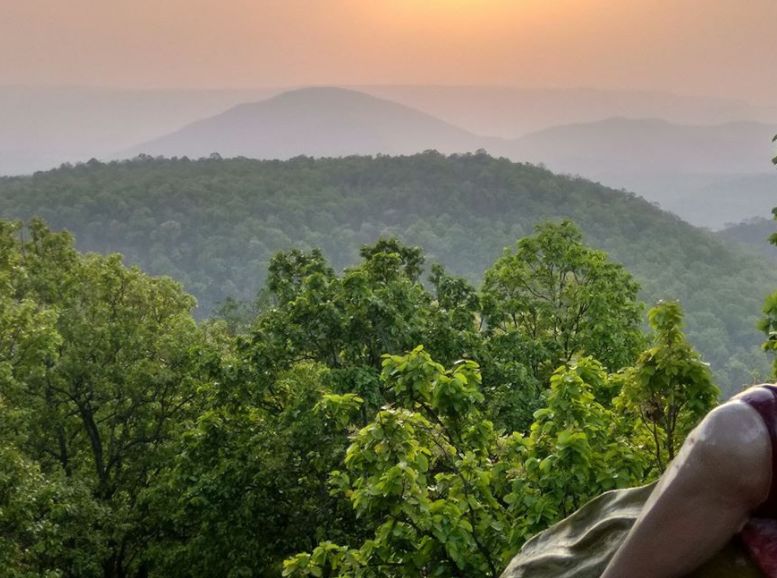These museums transcend mere collections of artifacts. They are vibrant storytellers, bringing the diverse tribal groups of Jharkhand to life. Step inside and discover intricate handicrafts whispering tales of forgotten skills, traditional attire adorned with vibrant colors symbolizing community identities, and echoes of ancient rituals that connect the past to the present. Captivating folklore comes alive, offering a glimpse into the very soul of tribal life.
For travelers seeking an authentic cultural experience, Jharkhand’s tribal museums are a treasure trove. They showcase the enduring legacy and vibrant traditions of the state’s tribal communities, ensuring their stories continue to inspire and captivate for generations to come.
How to reach:
- Air:
The main airport for air travelers is Birsa Munda Airport (IXR) in Ranchi, the state capital. Regular flights connect Ranchi to major Indian cities like Delhi, Mumbai, Kolkata, and Bangalore. Upon arrival, taxis and public transportation options are readily available to whisk you to tribal museums within the city or nearby areas.
- Train:
Jharkhand’s extensive railway network connects it to various parts of India. Ranchi Railway Station serves as a major hub, with connections to major cities like Delhi, Kolkata, Mumbai, and Patna. Other important stations include Dhanbad, Jamshedpur (Tatanagar Junction), and Bokaro. Taxis and buses are easily accessible from these stations to take you to your final destination.
- Road:
Jharkhand boasts a well-connected network of national and state highways. Reaching Ranchi or other key cities like Jamshedpur, Dhanbad, and Bokaro by road is convenient from neighboring states like Bihar, West Bengal, and Odisha. Regular bus services, including state-run and private operators, service these routes. Renting a car or hiring a taxi provides flexibility for those who prefer to drive themselves.
- Local Transport:
Once within Jharkhand, local transport options like taxis, auto-rickshaws, and buses are readily available for navigating cities and reaching the tribal museums. For a more comfortable and customizable visit, consider hiring a private taxi or car for the day.
Best time to visit:
Winter (November to February): Pleasant Escape! Jharkhand’s winter boasts cool and comfortable weather with temperatures ranging from 10°C to 25°C. This makes it an ideal time for outdoor exploration and sightseeing. The clear skies and mild temperatures are perfect for visiting tribal museums and nearby attractions without the discomfort of extreme weather. Winter also coincides with many cultural festivals and events, offering a glimpse into traditional performances and celebrations.
Spring (March to April): Mild Temperatures, Vibrant Landscapes Spring brings a gradual rise in temperatures, with comfortable daytime highs between 20°C and 30°C. This season is perfect for those who prefer milder weather and fewer crowds. The landscapes come alive with lush greenery, making it visually captivating to explore the museums and surroundings. Spring may also host some local festivals and cultural events, enriching your cultural immersion.
Summer (May to June): Plan Wisely for the Heat Summer can be hot and humid in Jharkhand, with temperatures exceeding 30°C and occasionally reaching 40°C. While outdoor activities can be challenging during peak heat hours, exploring the tribal museums is still possible with proper planning.
Monsoon (July to September): Lush Landscapes, Potential for Disruptions The monsoon season transforms Jharkhand with heavy rainfall, creating a blanket of lush greenery and gushing waterfalls. Temperatures are slightly cooler, ranging from 25°C to 30°C, but humidity levels are high.
Attractions:
Ranchi Tribal Museum:

In the heart of Ranchi, the Ranchi Tribal Museum unlocks the door to Jharkhand’s rich tribal heritage. Step outside its walls and you’ll be greeted by Ranchi Hill, also known as Tagore Hill. This tranquil escape offers panoramic vistas of the city, inviting you to unwind after your cultural immersion. A short climb up the hill reveals Pahari Mandir, a revered Hindu temple. Here, spirituality and natural beauty intertwine, creating a unique atmosphere. The serenity of the surroundings complements the vibrant stories within the museum, making your visit to Ranchi a holistic journey into the soul of Jharkhand’s tribal communities.
Netarhat Tribal Museums:

Deep within Netarhat’s heart, where pristine forests whisper tales and cascading waterfalls serenade the air, lies the Netarhat Tribal Museum. This treasure trove serves as a gateway to Jharkhand’s vibrant tribal heritage. Stepping outside the museum, you’ll be captivated by the breathtaking Upper Ghaghri Falls, their power and beauty a testament to the untamed wilderness of Jharkhand.
Adventure awaits nearby at the Netarhat Wildlife Sanctuary. A tapestry of diverse flora and fauna bursts with life, inviting you on an immersive exploration of nature’s embrace. In Netarhat, cultural immersion and natural wonders intertwine, creating a truly authentic Jharkhand experience that will stay with you long after you depart.
Tribal Culture and Art Centers:

Jharkhand’s tribal culture thrives with a rich tapestry of traditions and artistry. To delve deeper, explore the state’s cultural centers. The Jharkhand Tribal Research Institute isn’t your average museum. It offers a vibrant experience with interactive exhibits and cultural programs that bring the region’s indigenous heritage to life.
Seeking a more hands-on experience? Look no further than the Amadubi Rural Tourism Centre. Here, talented local artisans showcase their skills through workshops and demonstrations. It’s not just about admiring beautiful crafts; it’s about engaging with the artists, learning traditional techniques, and gaining a deeper appreciation for Jharkhand’s tribal soul. These cultural centers are essential stops on any itinerary, offering a unique opportunity to connect with the heart of Jharkhand’s tribal communities.
Natural Attractions:

Jharkhand unveils a captivating blend of cultural heritage and breathtaking landscapes. Delve into tribal museums, where stories of Jharkhand’s indigenous people come alive. Then, step outside and find yourself surrounded by the emerald embrace of the Dalma Wildlife Sanctuary. Diverse wildlife roam free here, offering a glimpse into the vibrant tapestry of life that thrives alongside these ancient traditions.
For a tranquil escape, journey onwards to Jonha Falls. Cascading waters serenade the air as lush forests whisper secrets. This serene retreat provides a perfect counterpoint to the cultural immersion you’ve just experienced. Jharkhand’s natural wonders offer a beautiful balance, allowing you to connect with both the rich heritage and the very essence of the environment that nurtured it.
Local Experiences:
Tribal Villages: Go beyond the museums and visit nearby tribal villages. Witness daily life unfold, engage with locals, and participate in age-old traditions.
Local Markets: Dive into the lively atmosphere of local markets like the Ranchi Main Road Market and Chaibasa Haat. Explore a kaleidoscope of colors as you browse through stalls overflowing with unique handicrafts, textiles, and local delicacies.
Cultural Workshops: Get hands-on and learn traditional crafts like pottery, painting, and weaving from local artisans. These workshops offer a deeper understanding of Jharkhand’s tribal culture and allow you to create your own keepsakes infused with local artistry.
Tribal Cuisine: Embark on a culinary adventure and tantalize your taste buds with Jharkhand’s tribal flavors. Visit local eateries or join cooking classes to learn how to prepare traditional dishes like dhuska, litti-chokha, and bamboo shoot curry.
Cultural Performances: Immerse yourself in the vibrant rhythms and melodies of Jharkhand’s tribal music and dance. Witness cultural performances showcasing traditional folk dances like Chhau, Santhal, and Mundari.
Homestay Experience: Opt for a homestay in a tribal village and experience the warmth of local hospitality. Live alongside a tribal family, participate in daily chores like farming and cooking, and forge meaningful connections over shared meals and conversations.
Nature Walks: Lace up your walking shoes and embark on nature walks through the picturesque landscapes surrounding tribal villages and museums. Explore lush forests, meandering rivers, and rolling hills teeming with diverse flora and fauna.
Travel tips:
Planning Like a Pro: Research museum hours, fees, and any special events beforehand. Weekdays offer a more relaxed experience, especially during peak tourist season.
Respecting Traditions: Jharkhand’s tribal communities have distinct customs. Dress modestly, seek permission for photos (especially in villages), and be mindful of local sensitivities.
Packing for Fun: Comfortable clothes and shoes are key for exploring museums and venturing outdoors. Don’t forget essentials like sunscreen, hats, insect repellent, and a reusable water bottle to stay hydrated.
Fuel Up for Exploration: Pack water and snacks to keep your energy levels up during sightseeing and outdoor adventures.
Wildlife Encounters: If visiting wildlife sanctuaries, maintain a safe distance from animals, avoid disturbing them, and follow park guidelines for a safe and enjoyable experience.
Weather Wisdom: Check the forecast before your trip and pack accordingly. Monsoon season can bring sudden downpours, so pack rain gear if necessary.
Getting Around: Opt for reliable transportation like pre-booked taxis or rentals. Public transportation might be limited in some areas, so plan your itinerary strategically.
Local Insights: Consider hiring local guides at museums and cultural sites. Their expertise unlocks deeper knowledge of Jharkhand’s tribal history, art, and traditions, enriching your experience.
Tread Lightly: Practice responsible tourism. Dispose of waste properly, avoid littering, and minimize your environmental impact. Respect wildlife habitats and designated trails during nature walks.
Embrace the Journey: Be open to new experiences and cultural differences. Adaptability and a positive attitude will make your Jharkhand adventure even more rewarding.
Conclusion
Exploring Jharkhand’s tribal museums with Xplro.com as your guide unlocks a captivating journey into the region’s vibrant cultural tapestry. Immerse yourself in the rich heritage of indigenous communities through captivating exhibits, and be awestruck by the serene natural landscapes surrounding the museums. Every aspect of this experience leaves a lasting impression. Gain a deeper appreciation for the resilience and diversity of Jharkhand’s tribal communities by delving into the traditions, art, and way of life preserved within these museums. As you embark on your cultural odyssey, approach it with an open mind, respect local customs, and embrace curiosity.
FAQs
What are tribal museums in Jharkhand?
- Tribal museums in Jharkhand are dedicated institutions that preserve and exhibit the cultural heritage of the state’s indigenous tribal communities. They showcase artifacts, exhibits, and interactive displays providing insights into the traditions, customs, and lifestyles of Jharkhand’s tribes.
How many tribal museums are there in Jharkhand?
- Jharkhand boasts several tribal museums, each offering a unique perspective on the rich cultural diversity of the region. Notable ones include the Ranchi Tribal Museum, Tagore Hill Tribal Museum, and Netarhat Tribal Museum.
What can I expect to see at tribal museums in Jharkhand?
- Visitors can explore a diverse range of exhibits and artifacts related to tribal culture, including traditional attire, handicrafts, tools, musical instruments, and religious objects. Many museums also feature multimedia presentations and interactive displays for an immersive experience.
Are tribal museums in Jharkhand suitable for children?
- Yes, tribal museums in Jharkhand offer educational and engaging experiences for children of all ages. They provide opportunities to learn about different cultures, traditions, and histories through interactive exhibits and activities.
Are tribal museums wheelchair accessible?
- Accessibility may vary among museums, but efforts are often made to accommodate visitors with mobility challenges. It’s advisable to inquire about accessibility options and facilities when planning a visit.
Can I take photographs inside tribal museums?
- Photography policies vary, but generally, photography for personal use is allowed in tribal museums. Visitors should confirm with museum staff and respect any restrictions on photography, especially in sensitive areas.
Are guided tours available at tribal museums?
- Yes, many tribal museums offer guided tours conducted by knowledgeable staff or trained guides. These tours provide valuable insights into the exhibits, cultural significance, and history of the tribal communities represented.
Is there an entry fee to visit tribal museums in Jharkhand?
- Entry fees, if applicable, vary by museum. Some may have nominal charges, while others offer free entry. Visitors should check the museum’s website or contact them directly for information on entry fees.
What are the opening hours of tribal museums in Jharkhand?
- Opening hours vary by museum, typically aligning with regular business hours. Visitors are advised to verify the museum’s operating hours in advance by checking their website or contacting them directly.
Can I purchase souvenirs at tribal museums?
- Yes, many tribal museums have gift shops or souvenir stalls where visitors can purchase handicrafts, traditional items, books, and other memorabilia related to tribal culture, supporting the museum and local artisans.
Are there any special events or exhibitions at tribal museums?
- Tribal museums in Jharkhand often host special events, exhibitions, or cultural programs showcasing aspects of tribal culture, art, music, and dance. These events provide unique and enriching experiences for visitors.
How can I learn more about tribal culture in Jharkhand?
- Besides visiting tribal museums, individuals can explore tribal culture through books, documentaries, cultural festivals, and interactions with local communities. Engaging with local guides and participating in cultural activities can deepen understanding of tribal heritage.





